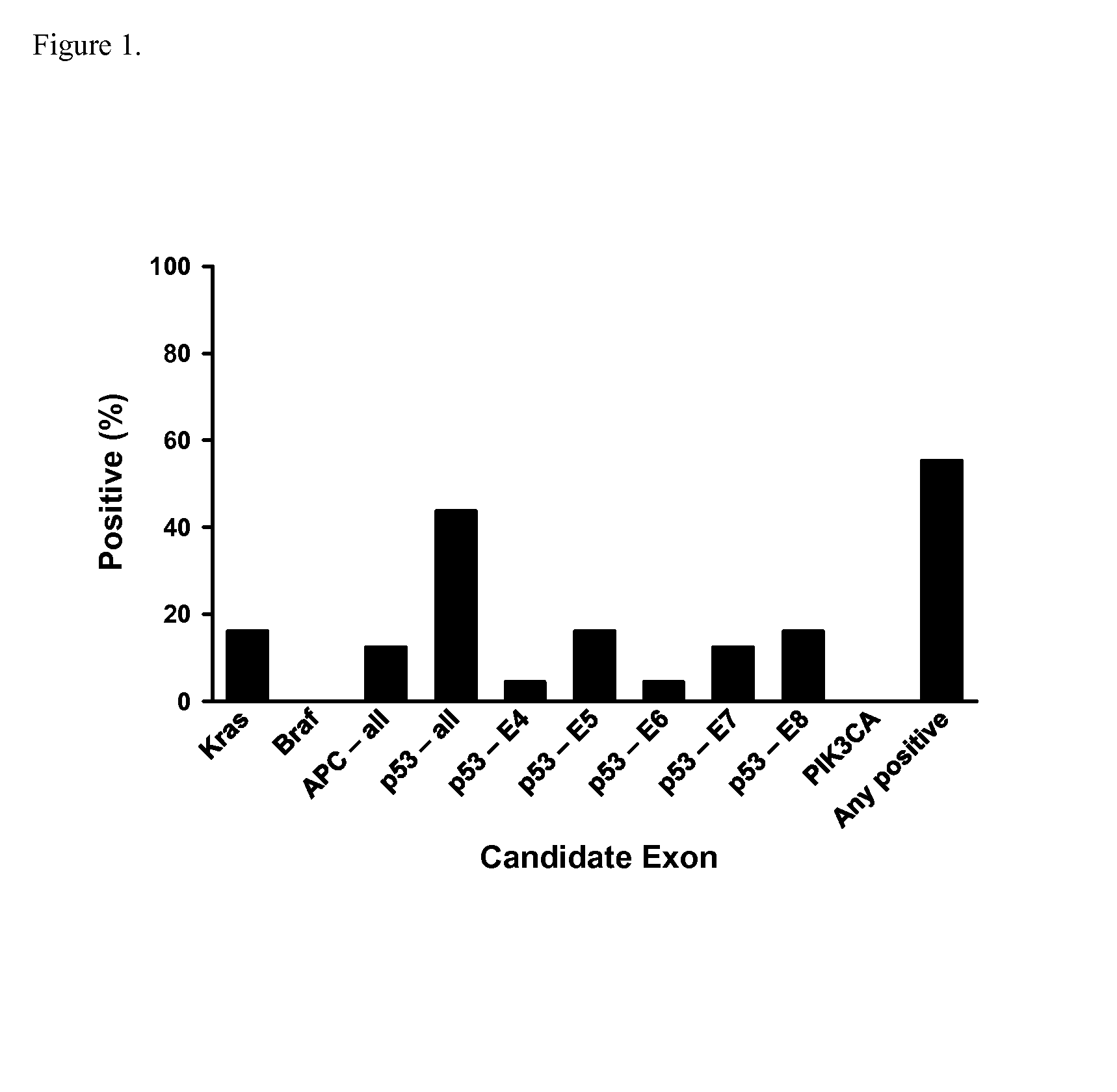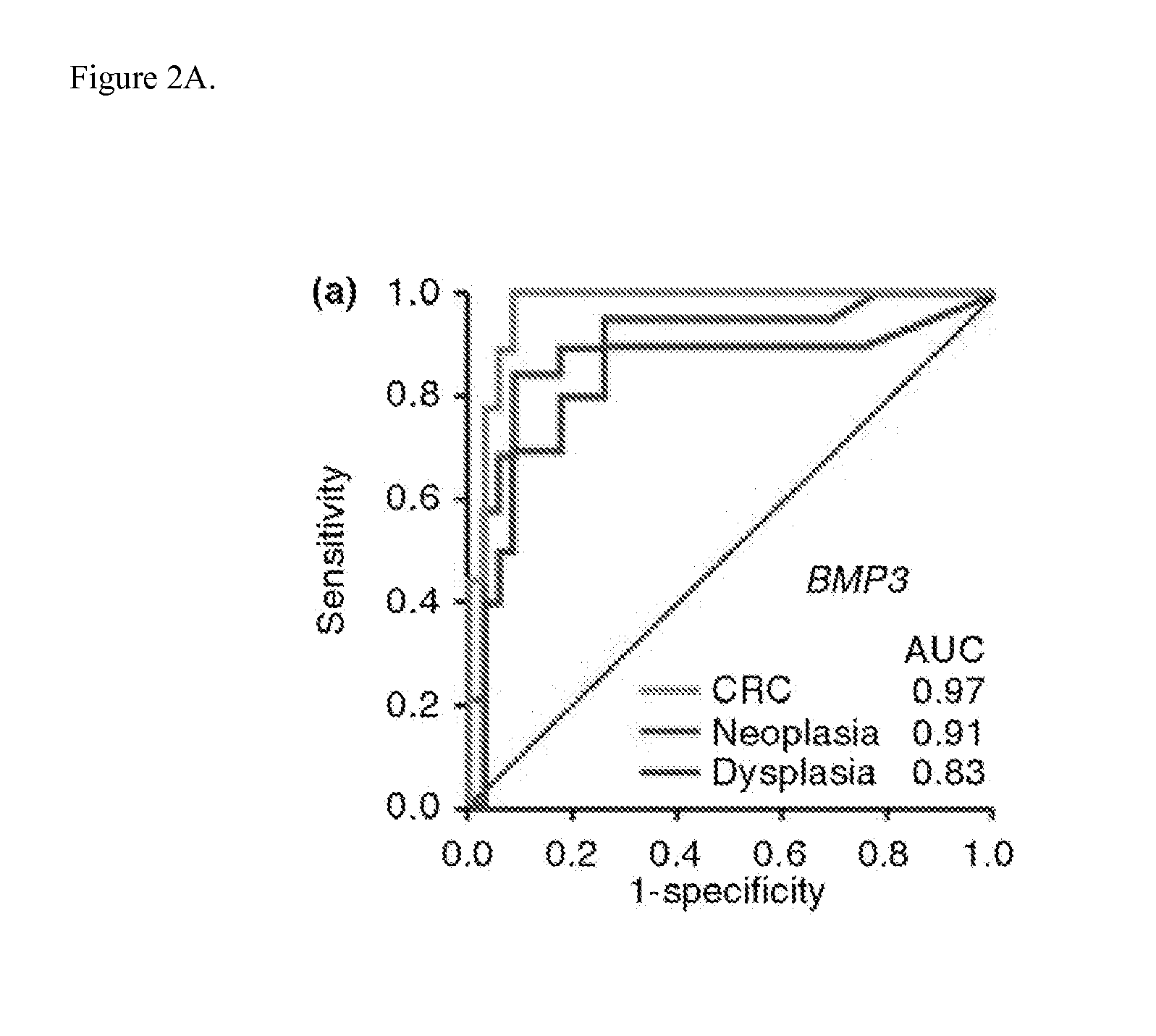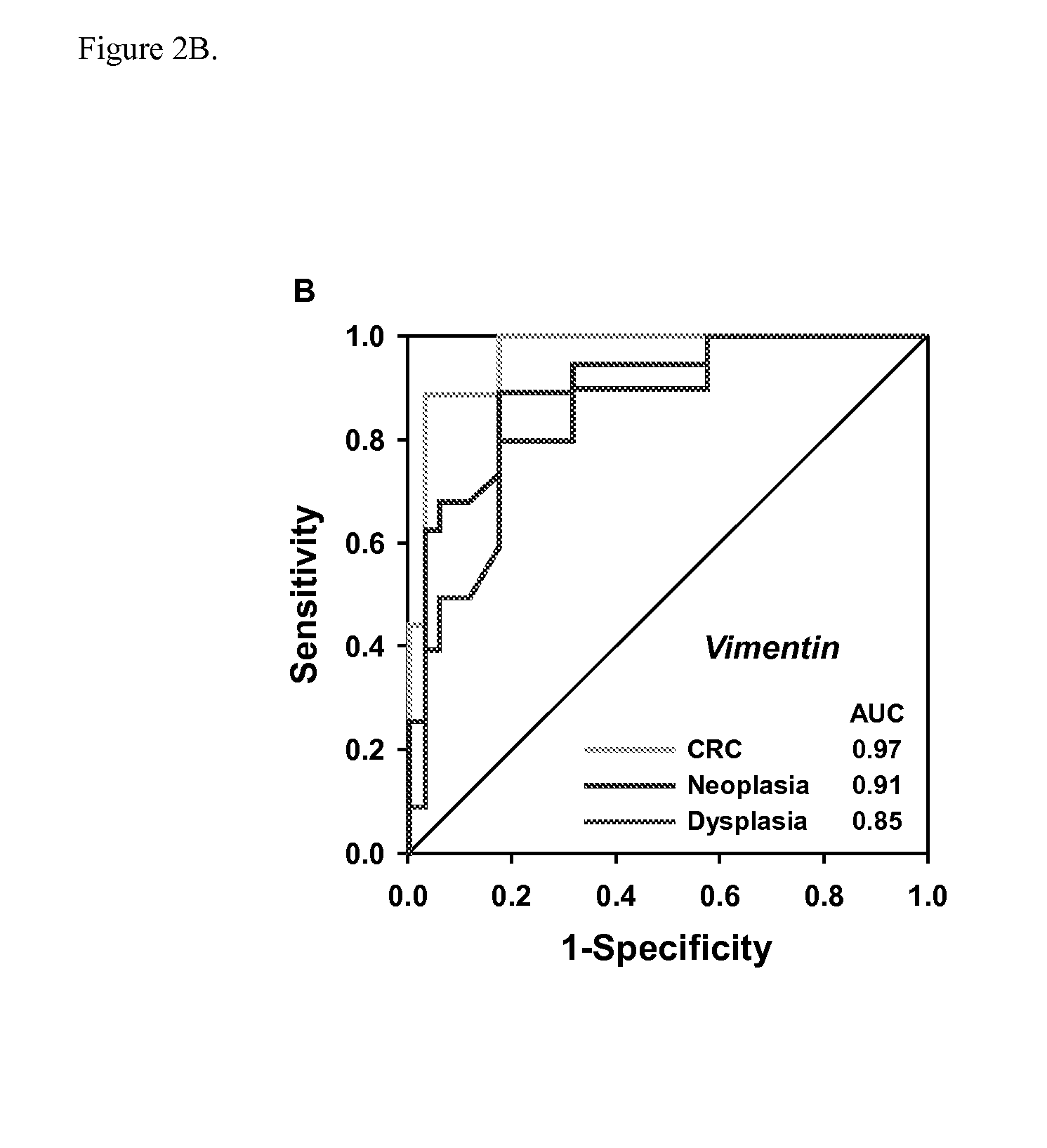Methods and materials for noninvasive detection of colorectal neoplasia associated with inflammatory bowel disease
a colorectal neoplasia and inflammatory bowel disease technology, applied in the field of colorectal neoplasia detection, can solve the problem that the conventional colonoscopic surveillance is insensitive to the detection of colorectal neoplasia associated with inflammatory bowel disease, and achieves the goal of reducing morbidity and mortality, facilitating diagnosis and clinical intervention, and improving recovery rate
- Summary
- Abstract
- Description
- Claims
- Application Information
AI Technical Summary
Benefits of technology
Problems solved by technology
Method used
Image
Examples
examples
[0092]The invention now being generally described, will be more readily understood by reference to the following example, which is included merely for purposes of illustration of certain aspects and embodiments of the present invention, and are not intended to limit the invention.
example i
[0093]This example describes the materials and methods for the experiments conducted during the course of developing embodiments for the present invention.
[0094]Tissue Study
[0095]Patients
[0096]Tissues were identified from a single-center archive of IBD-CRC cases and IBD control specimens after confirmation of histologic diagnosis. Cases and controls were matched for age (within a 10 year range), gender, disease duration, anatomic extent (left-sided vs. extensive) and PSC status (yes / no). DNA was extracted from paraffin-embedded tissues as described (see, e.g., Garrity-Park M M, Am J Gastroenterol 2008; 103:407-15; herein incorporated by reference in its entirety).
[0097]Mutation Marker Gene Sequencing
[0098]Candidate exons on APC, p53, K-ras, BRAF and PIK3CA were amplified in a real-time iCycler (BioRad, Hercules, Calif.) using real-time PCR reactions, performed with sense and antisense primers, IQ Supermix polymerase kit (BioRad) and 10 ng of genomic DNA. Products were run on a 2% ag...
example ii
[0114]This example describes the results of the Tissue Study.
[0115]Clinical characteristics were well-matched between cases and controls (Table 1). There were no significant differences with the exception of inflammation score, which was higher in controls.
TABLE 1Patient Characteristics for Tissue StudyCasesControlsN = 25N = 25Male (%) 16 (64)17 (68)Mean age, years (SD) 52 (14.4) 50 (11.9)Mean CUC duration, years (SD)20.7 (9.2) 19.9 (8.3) Extensive (%)21 (84)20 (80)PSC (%) 4 (16) 3 (12)Mean Inflammation score (SD)10.17 (0.27) 0.68 (0.66)21Using method of reference 262p = 0.001SD, standard deviationCUC, chronic ulcerative colitisPSC, primary sclerosing cholangitisCases = Colorectal cancer in CUC,Controls = CUC without neoplasia
[0116]FIG. 1 summarizes the results of DNA sequencing for the case samples. Across 6 APC regions overlapping the mutation cluster region (1, 2, C, N, Y, L2), only 3 mutations were found. Four mutations were found on K-ras. As anticipated, p53 was the most inf...
PUM
| Property | Measurement | Unit |
|---|---|---|
| size | aaaaa | aaaaa |
| volume | aaaaa | aaaaa |
| median size | aaaaa | aaaaa |
Abstract
Description
Claims
Application Information
 Login to View More
Login to View More - R&D
- Intellectual Property
- Life Sciences
- Materials
- Tech Scout
- Unparalleled Data Quality
- Higher Quality Content
- 60% Fewer Hallucinations
Browse by: Latest US Patents, China's latest patents, Technical Efficacy Thesaurus, Application Domain, Technology Topic, Popular Technical Reports.
© 2025 PatSnap. All rights reserved.Legal|Privacy policy|Modern Slavery Act Transparency Statement|Sitemap|About US| Contact US: help@patsnap.com



